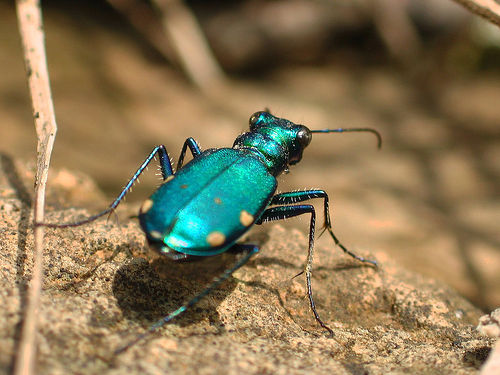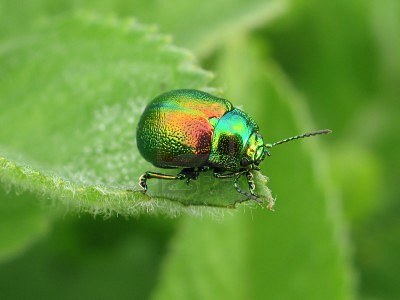
Most insect structural colors are in the green-blue-violet
range, but red, gold, and copper colors may also be produced in this
way. The shade of color and its intensity are determined by several
factors, including the thickness and spacing of the layers of the
scales, or epicuticle, the number of these layers, and the angle of the
incoming light.
The epicuticle, or outermost surface, of iridescent beetles is made of many stacks of slanting, plate-like layers, which are oriented in different directions. These layers bend, and then reflect the incoming light in the same way as the ridges of iridescent butterfly and moth scales. Similarly, they produce structural colors by interference in the same way as butterfly wings. A layer of pigment below the refractive plates of beetles and the ridges of iridescent butterfly scales enhances the effect of the iridescence. In some species, the epicuticle acts as a reflection diffraction grating to cause iridescence. The exact mechanism of the structural color for many species is an open topic of research.

The leafy environment of some beetles is often illuminated by
intermittent flashes of sunlight as breezes move through the trees. The
glistening surfaces of these beetles blend in well with the beetles’
surroundings.
No comments:
Post a Comment